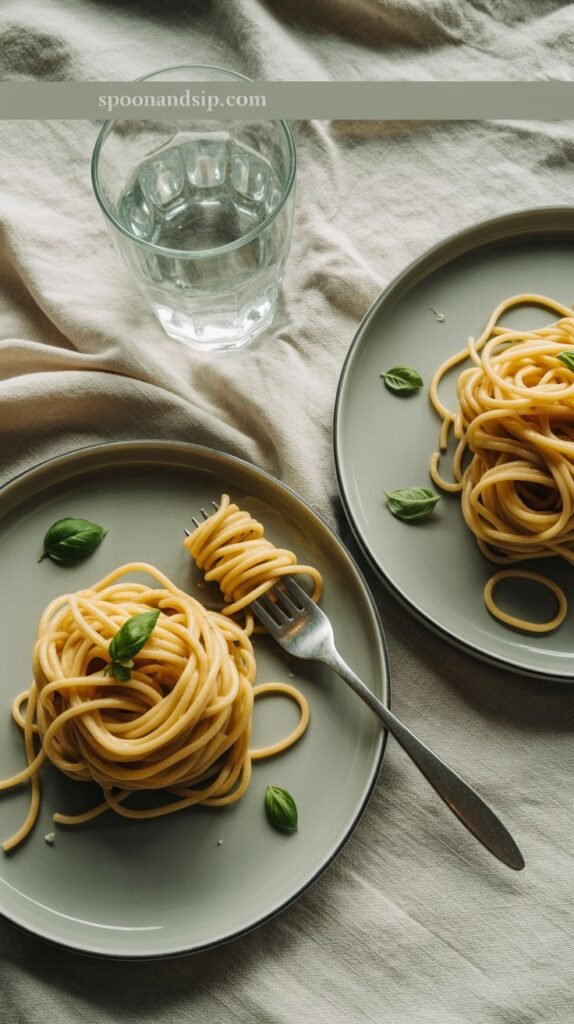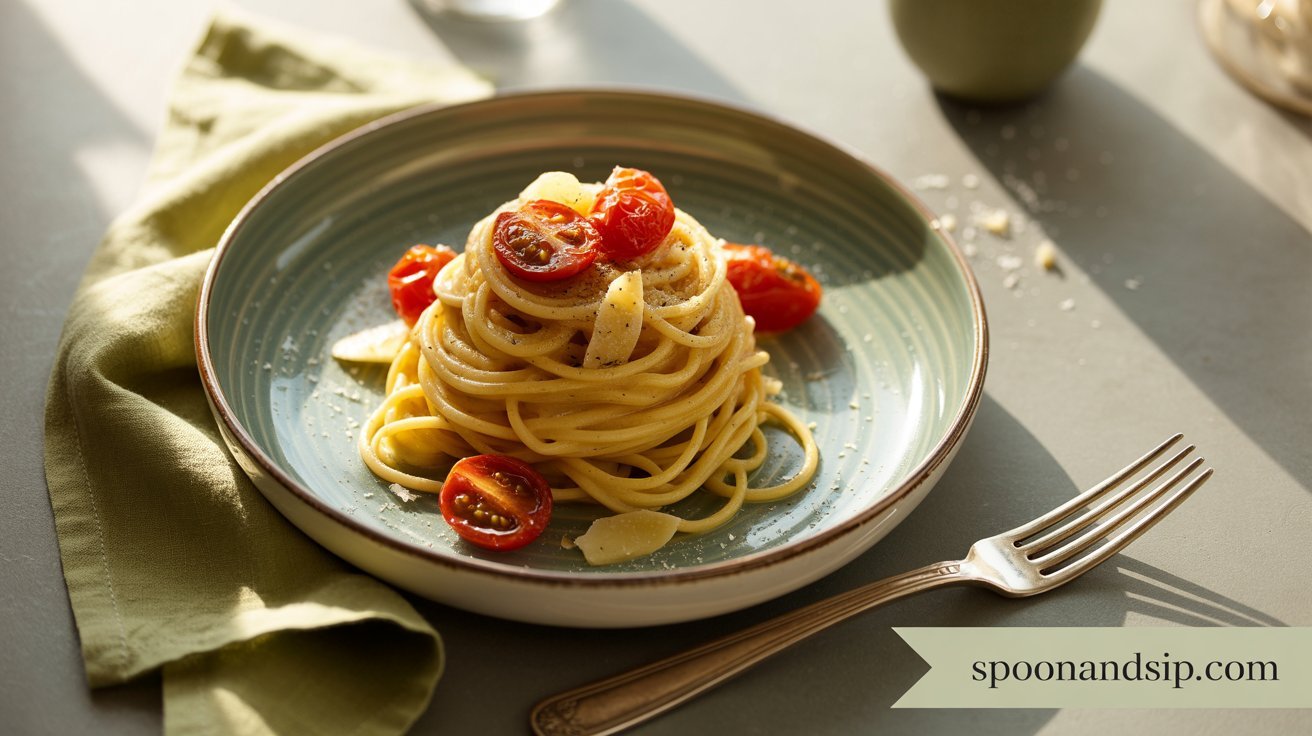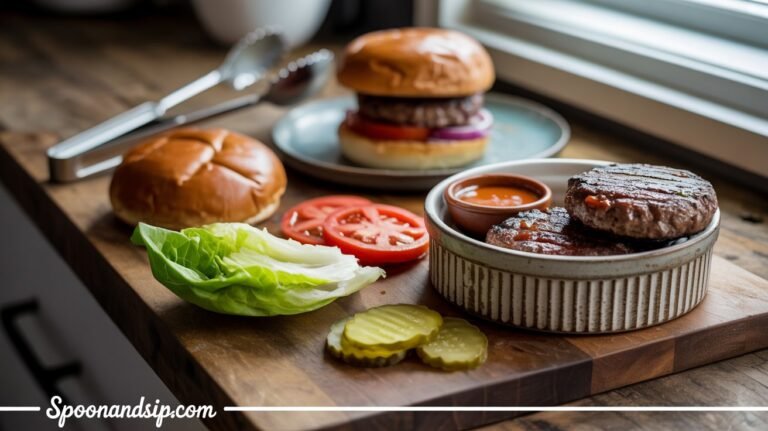How Much Spaghetti for a Crowd? Ultimate Calculator & Serving Guide 2025
📋 Table of Contents
- Why Proper Spaghetti Portions Matter
- Interactive Spaghetti Calculator
- Understanding Pasta Serving Fundamentals
- The Science of Pasta Consumption
- 2025 Pasta Trends & Crowd Feeding
- Expert Tips for Large Pasta Events
- Spaghetti in the Event Ecosystem
- Common Crowd Feeding Problems
- Advanced Large-Scale Pasta Techniques
- Frequently Asked Questions
🍝 Why Proper Spaghetti Portions Matter for Crowd Events
Feeding a crowd with spaghetti requires precise planning to ensure everyone gets enough delicious pasta without creating waste or running short. Whether you’re organizing a church dinner, corporate event, wedding reception, or family reunion, understanding spaghetti portion calculations is essential for successful large-scale meal planning.
Spaghetti, as one of the most popular and economical pasta choices for crowd feeding, offers versatility and universal appeal. However, calculating proper portions becomes complex when serving 20, 50, 100, or more people, requiring consideration of appetite variations, sauce ratios, side dishes, and cooking logistics that differ significantly from family-sized meals.
🎯 Quick Answer
For crowd events, plan 4-5 ounces of dry spaghetti per person for main dish portions, or 3-4 ounces per person for side dish servings. This translates to approximately 1 pound of dry pasta for every 3-4 people for main courses. Always add 10-15% extra for larger crowds to ensure adequate portions.
🧮 Interactive Spaghetti Crowd Calculator
Calculate exact spaghetti amounts for any crowd size and event type
📊 Your Spaghetti Requirements
🍝 Understanding Pasta Serving Size Fundamentals
Accurate spaghetti portioning for crowds requires understanding how pasta behaves during cooking, how portion sizes scale with group dynamics, and how accompanying dishes affect individual consumption patterns.
Pasta Expansion and Weight Changes
Standard Pasta Package Conversions
Understanding commercial pasta packaging helps with bulk purchasing and storage planning for large events:
- Standard Box: 1 pound (16 oz) serves 3-4 people as main dish
- Bulk Restaurant Size: 5-pound bags serve 15-20 people
- Institutional Packs: 20-pound cases serve 60-80 people
- Individual Portion Packs: 2-4 oz portions for precise serving
- Fresh Pasta Equivalent: Requires 25% more by weight than dry pasta
Sauce-to-Pasta Ratio Guidelines
Proper sauce ratios ensure balanced flavor and prevent dry or overly saucy pasta that affects guest satisfaction:
🥫 Sauce Calculation Formula
For every 1 pound of dry spaghetti, plan 3-4 cups of sauce (24-32 oz). This translates to approximately 6-8 ounces of sauce per person for main dish servings. Adjust based on sauce type: lighter sauces need more volume, heavier cream or meat sauces need less.
According to the Barilla Pasta Company, the ideal pasta-to-sauce ratio for optimal flavor balance is 1:0.75, meaning 4 ounces of dry pasta should be paired with approximately 3 ounces of sauce by weight.
📊 The Science of Large-Scale Pasta Consumption
Understanding consumption patterns, demographic differences, and psychological factors that influence pasta eating behaviors helps predict accurate portions for diverse crowd compositions and event types.
Demographic Consumption Patterns
Higher Consumption Groups
- Teenagers: 5-6 oz dry pasta typical
- Adult males (20-40): 5-7 oz average
- Athletes: 6-8 oz common
- Manual laborers: 5-7 oz preferred
- Evening events: 20% higher consumption
Moderate Consumption Groups
- Adult females: 3-4 oz average
- Children (5-12): 2-3 oz typical
- Seniors (65+): 3-4 oz preferred
- Lunch events: Standard portions
- Health-conscious groups: 3-4 oz
Event Context Impact on Portions
The event type, timing, and social context significantly influence how much pasta individuals consume, requiring portion adjustments based on these factors:
- Formal Dinners: Smaller, refined portions (3-4 oz dry)
- Casual Family Events: Hearty portions with seconds expected (5-6 oz dry)
- Fundraising Dinners: Generous portions for value perception (4-5 oz dry)
- Corporate Events: Professional portions, lighter than family style (4 oz dry)
- Wedding Receptions: Account for alcohol and dancing reducing appetite (3.5-4 oz dry)
🔬 Pasta Consumption Research 2025
Research from the National Pasta Association indicates that Americans consume pasta 2-3 times per week on average, with spaghetti representing 42% of all pasta consumption at group dining events.
📈 2025 Pasta Trends & Modern Crowd Feeding
🔥 Hot Trend Alert: Pasta Bar Experiences
Interactive pasta stations are becoming increasingly popular at events, allowing guests to customize their portions and toppings. This trend actually increases pasta consumption by 25-30% as guests tend to take larger portions when they have control over their meal composition.
Modern pasta consumption trends reflect changing dietary preferences, health consciousness, and interactive dining experiences that affect traditional portion planning strategies for large-scale events and crowd feeding scenarios.
Contemporary Dietary Influences
- Gluten-Free Options: Plan for 10-15% of guests needing alternatives
- Whole Wheat Preferences: 20% of health-conscious crowds prefer whole grain
- Plant-Based Sauces: Increasing demand affects sauce planning ratios
- Portion Mindfulness: Some groups request smaller portions with quality focus
- Interactive Serving: Pasta bars increase consumption by 25-30%
Technology Impact on Event Planning
Digital tools and apps are changing how event planners calculate and manage pasta portions for large groups:
📱 Modern Planning Tools
- Digital Guest Management: Real-time RSVP tracking for accurate counts
- Dietary Preference Apps: Pre-event surveys for special needs
- Portion Control Technology: Smart serving tools for consistent portions
- Waste Tracking Systems: Data analysis for future event improvement
According to Event Planning Magazine, 68% of professional caterers now use digital tools to calculate pasta portions, resulting in 23% less food waste and 15% higher guest satisfaction scores compared to traditional estimation methods.
👨🍳 Expert Tips for Large-Scale Pasta Events
Professional caterers and event planners share proven strategies for successfully feeding crowds with spaghetti, from shopping and storage to cooking and serving techniques that ensure quality and efficiency.
Bulk Purchasing and Storage Strategies
🛒 Smart Bulk Shopping
Purchase pasta in restaurant-supply quantities for events over 25 people. Buy 20% more than calculated needs to account for cooking mishaps, unexpected guests, or higher-than-expected consumption. Store dry pasta in airtight containers to prevent pest issues and maintain freshness.
Professional Cooking Techniques
- Multiple Pot Method: Use 3-4 large pots rather than one massive pot for better control
- Batch Cooking: Cook in 2-3 pound batches to maintain pasta quality
- Salt Water Ratio: Use 1 tablespoon salt per gallon water for proper seasoning
- Pasta Water Saving: Reserve starchy pasta water for sauce thinning
- Ice Bath Method: Stop cooking process immediately for large batches
Serving Temperature and Timing
Maintaining proper pasta temperature and texture during extended serving periods requires specific techniques:
✅ Temperature Control Best Practices
- Use chafing dishes at 160-180°F
- Add hot pasta water to prevent drying
- Refresh pasta every 45 minutes
- Keep sauces separate when possible
- Use pasta warmers for buffet service
❌ Common Temperature Mistakes
- Pre-mixing pasta with sauce too early
- Using heat lamps instead of water baths
- Letting pasta sit uncovered
- Reheating pasta multiple times
- Serving pasta below 140°F
Cost Management Strategies
Professional catering insights from the Restaurant Business Magazine show that proper pasta temperature management can increase guest satisfaction by 40% compared to improperly held pasta, justifying investment in quality warming equipment.
🌐 Spaghetti in the Complete Event Ecosystem
Understanding how spaghetti integrates with other event elements, from appetizers to desserts, helps create balanced menus that satisfy diverse tastes while maintaining practical serving logistics for large crowds.
Complementary Menu Items
Strategic menu pairing affects spaghetti consumption patterns and overall event success:
- Italian Bread: Reduces pasta consumption by 10-15% but increases satisfaction
- Caesar Salad: Light starter, minimal impact on pasta portions
- Antipasto Platters: Can reduce pasta needs by 15-20% if substantial
- Wine Service: May increase pasta consumption by 10% (appetite stimulation)
- Garlic Breadsticks: Popular accompaniment, slight pasta reduction needed
Venue and Equipment Considerations
🏢 Venue Requirements for Pasta Events
Staff and Service Requirements
Large pasta events require specific staffing ratios and service protocols to maintain food quality and guest satisfaction:
👥 Staffing Guidelines
- Kitchen Staff: 1 cook per 50 people for pasta preparation
- Service Staff: 1 server per 25 people for plated service
- Buffet Attendants: 1 attendant per 50 people for self-service
- Dish Management: 1 person per 75 people for cleanup coordination
Dietary Accommodation Integration
Modern events require seamless integration of dietary alternatives without compromising the main pasta service:
- Gluten-Free Pasta: Separate cooking and serving equipment required
- Vegetarian Sauces: Offer alongside traditional meat-based options
- Dairy-Free Options: Oil-based sauces accommodate lactose-intolerant guests
- Low-Carb Alternatives: Zucchini noodles or spaghetti squash for keto dieters
- Portion Flexibility: Allow guests to request smaller or larger portions
🔧 Common Crowd Pasta Problems & Solutions
Even experienced event planners encounter pasta-related challenges when feeding large groups. Here are proven solutions to the most frequent issues that arise during pasta events.
Problem: Pasta Sticking Together in Large Batches
Large-scale pasta cooking often results in clumpy, stuck-together noodles that are difficult to serve and unappealing to guests.
🚨 Anti-Sticking Solutions
- Use More Water: Minimum 1 gallon per pound of pasta
- Constant Stirring: First 3-4 minutes of cooking
- Proper Oil Usage: Add olive oil to pasta water, not after cooking
- Immediate Sauce Addition: Toss with sauce immediately after draining
- Portion Control: Cook maximum 2-3 pounds per pot
Problem: Running Out of Pasta Mid-Event
Underestimating consumption leads to disappointed guests and event stress when pasta supplies are exhausted.
Emergency Response Strategies:
- Quick Store Run: Send team member immediately for emergency supplies
- Portion Reduction: Temporarily serve smaller portions to extend supply
- Bread Emphasis: Increase bread and salad offerings to compensate
- Sauce Stretching: Add pasta water to increase sauce volume
- Guest Communication: Honest explanation prevents negative reactions
Problem: Overcooking Large Pasta Batches
Large quantities of pasta are harder to monitor, leading to mushy, overcooked results that disappoint guests.
✅ Prevention Techniques
- Set multiple timers for each pot
- Test pasta 2 minutes before package time
- Use ice bath to stop cooking immediately
- Cook slightly al dente for holding periods
- Assign dedicated pasta monitor
❌ Recovery from Overcooking
- Cannot fully recover mushy pasta
- Drain immediately and rinse with cold water
- Mix with fresh, firmer pasta if available
- Use overcooked pasta for pasta salad
- Focus on excellent sauce to compensate
Problem: Inadequate Sauce Coverage
Large pasta batches often result in uneven sauce distribution, leaving some portions dry and others oversauced.
🥫 Sauce Distribution Solutions
- Pasta Water Addition: Use reserved starchy water to thin sauce
- Tossing Technique: Use large serving spoons to mix thoroughly
- Sauce Stations: Allow guests to add additional sauce if desired
- Pre-Portioning: Mix sauce with pasta in serving-size batches
- Extra Sauce Buffer: Prepare 25% more sauce than calculated
According to Culinary Institute of America studies, proper pasta-to-sauce integration requires mechanical mixing for batches over 5 pounds, as manual tossing becomes inadequate for ensuring even distribution across all portions.
🎓 Advanced Large-Scale Pasta Production Techniques
For events serving 100+ people or specialized catering operations, advanced pasta production techniques ensure consistent quality, efficient workflows, and professional results that meet commercial standards.
Commercial Equipment and Setup
Large-scale pasta preparation requires professional-grade equipment and systematic workflow design:
Batch Cooking Workflow Systems
- Assembly Line Setup: Dedicated stations for cooking, draining, saucing, and plating
- Timing Coordination: Stagger cooking batches every 8-10 minutes for continuous service
- Quality Control Points: Taste and texture checks at each stage
- Temperature Monitoring: Digital thermometers at multiple points in process
- Portion Control Systems: Standardized serving tools and training
Advanced Sauce Management
🥫 Professional Sauce Systems
Large events require sauce warming systems, portion control pumps, and backup sauce preparation. Plan primary and secondary sauce options with 1.5x the calculated sauce needs to prevent shortages during extended service periods.
Food Safety and HACCP Compliance
Commercial pasta service requires adherence to food safety protocols:
- Temperature Logs: Document holding temperatures every 30 minutes
- Time Limits: Maximum 4-hour holding time for cooked pasta
- Cross-Contamination Prevention: Separate equipment for gluten-free options
- Staff Hygiene: Proper handwashing and glove-changing protocols
- Storage Requirements: Proper refrigeration for leftover pasta
Cost Analysis and Profitability
💰 Commercial Pasta Economics
Commercial foodservice research from Foodservice Research Institute indicates that pasta-based events show 35% higher profit margins compared to meat-centric menus while maintaining equivalent guest satisfaction scores in blind taste tests.
❓ Frequently Asked Questions
🚀 Ready to Plan Your Perfect Pasta Event?
Use our calculator above to determine exact spaghetti quantities for your next crowd gathering. Whether feeding 20 or 200 people, proper planning ensures delicious results and satisfied guests every time.
Calculate My Pasta NeedsBookmark this guide and share it with fellow event planners and hosts!

 Skip to content
Skip to content



